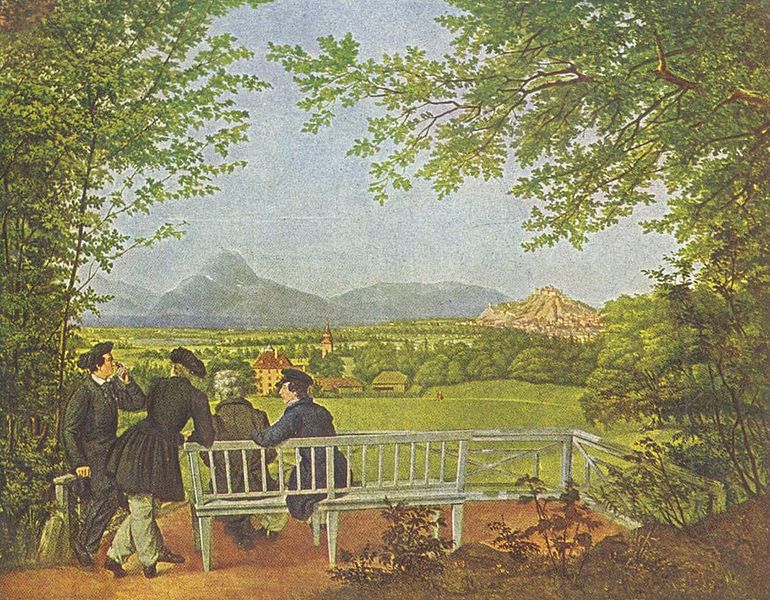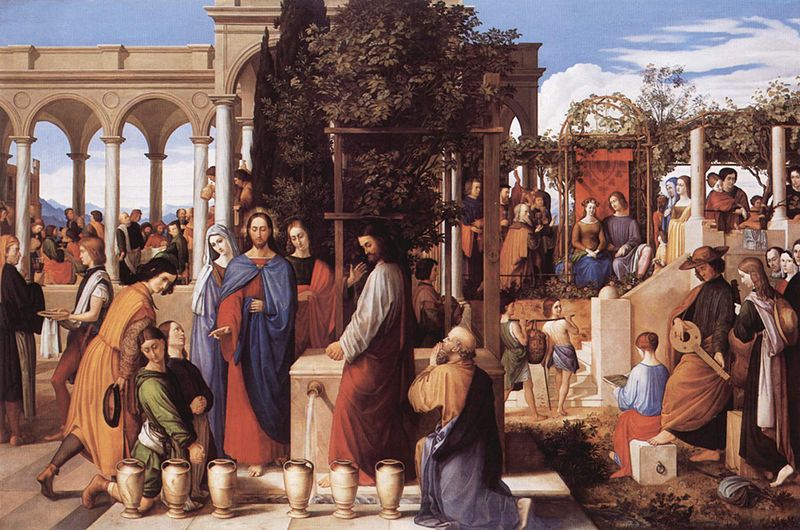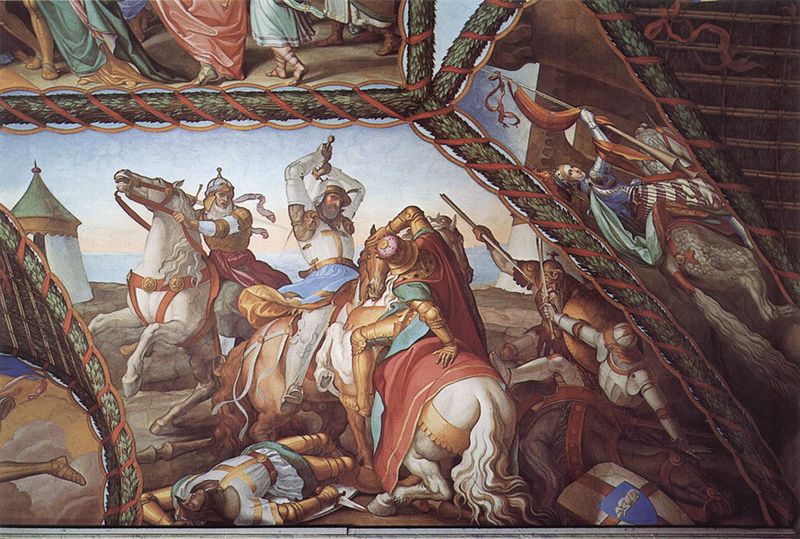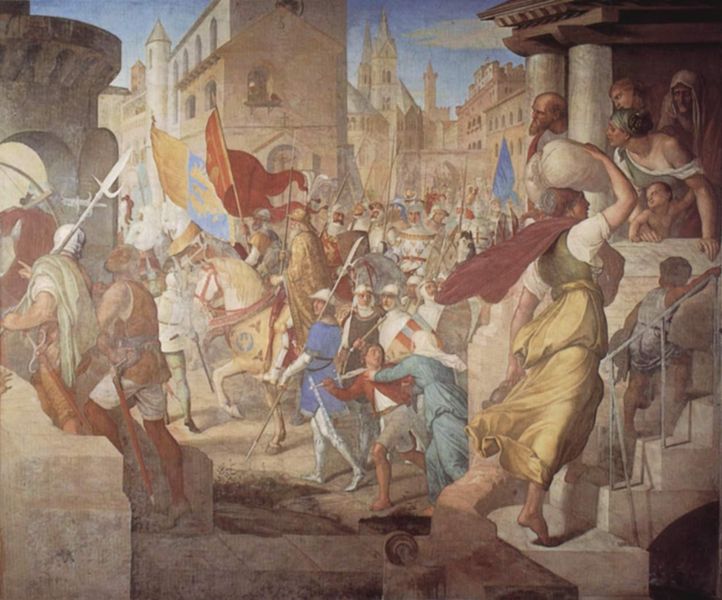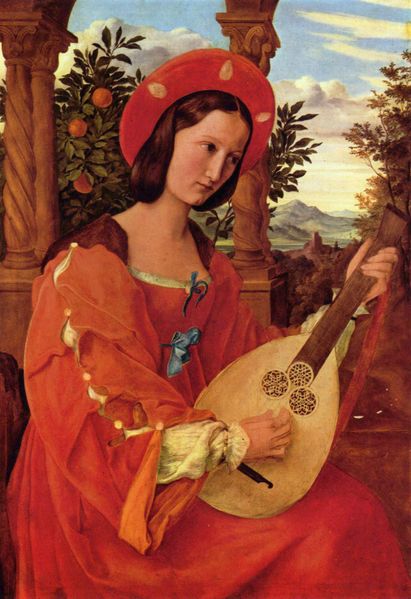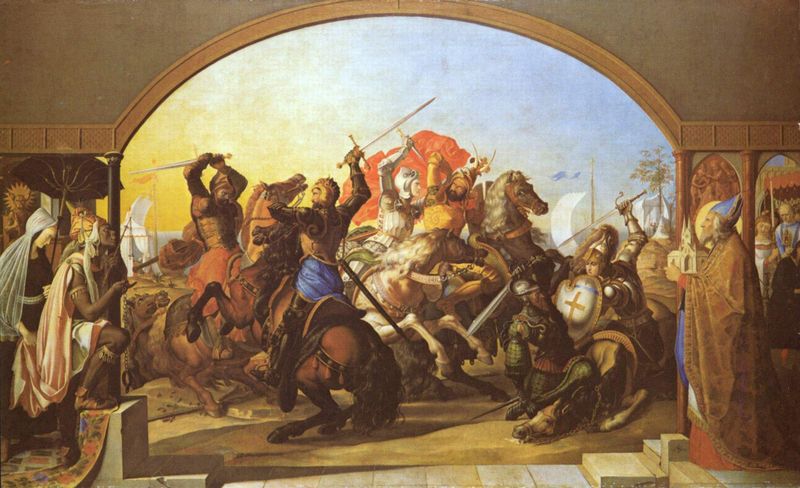<Back to Index>
- Mathematician Adolf Hurwitz, 1859
- Painter Julius Schnorr von Carolsfeld, 1794
- Minister of Justice Palmiro Togliatti, 1893
PAGE SPONSOR
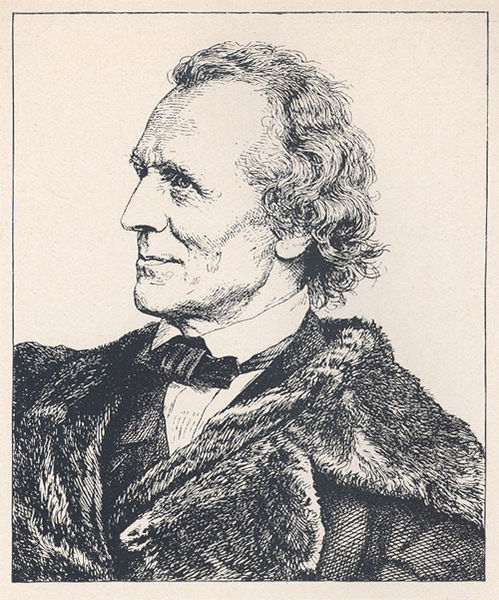
Julius Schnorr von Carolsfeld (March 26, 1794 - May 24, 1872) was a German painter.
Schnorr was born at Leipzig, where he received his earliest instruction from his father Johann Veit Schnorr (1764 - 1841), a draughtsman, engraver and painter.
At seventeen he entered the Vienna Academy, from which Johann Friedrich Overbeck and others who rebelled against the old conventional style had been expelled about a year before.
In 1818 he followed the founders of the new artistic brotherhood, the Nazarene movement, in their pilgrimage to Rome. This school of religious and romantic art abjured modern styles and reverted to and revived the principles and practice of earlier periods.
At the outset an effort was made to recover fresco painting and monumental art, and Schnorr found opportunity of proving his powers, when commissioned to decorate with frescoes, illustrative of Ariosto, the entrance hail of the Villa Massimo, near the Lateran. His fellow-laborers were Cornelius, Overbeck and Veit.
His
second period dates from 1825, when he left Rome, settled in Munich,
entered the service of King Ludwig,
and
transplanted
to Germany the art of wall-painting learned in Italy.
He showed himself qualified as a sort of poet-painter to the Bavarian
court; he organized a staff of trained executants, and set about
clothing five halls in the new palace with frescoes illustrative of the Nibelungenlied.
Other
apartments his prolific pencil decorated with scenes from the
histories of
Charlemagne, Frederick
Barbarossa and Rudolph of
Habsburg. Critics
considered these interminable compositions to be creative, learned in
composition, masterly in drawing, but also exaggerated in thought and
extravagant in style. Schnorr's
third
period is marked by his Biblical illustrations.
The
artist was a Lutheran,
and
took a broad and un-sectarian view which won for his Pictorial Bible ready currency throughout
Christendom. Frequently
the compositions are crowded and confused, wanting in harmony of line
and symmetry in the masses; thus they suffer under comparison with Raphael's
"Bible".
The
style is severed from the simplicity and severity of early
times, and surrendered to the florid redundance of the later Renaissance.
Yet
throughout are displayed fertility of invention, academic knowledge
with facile execution. Biblical
drawings
and cartoons for frescoes formed a natural prelude to designs
for church windows. The painter's renown in Germany secured commissions
in Great Britain.
Schnorr
made designs, carried out in the royal factory, Munich, for
windows in Glasgow cathedral and in St Paul's
Cathedral, London.
This
Munich glass provoked controversy: medievalists objected to its want of
lustre, and stigmatized the windows as coloured blinds and picture
transparencies. But the opposing party claimed for these modern
revivals the union of the severe and excellent drawing of early
Florentine oil-paintings with the colouring and arrangement of the
glass-paintings of the latter half of the 16th century. Schnorr
died at Munich in 1872. His brother Ludwig Ferdinand (1789 - 1853) was
also a painter. Julius's son (1836 – 1865), also called Ludwig was an operatic tenor, best known for being the first to sing
Wagner's Tristan shortly before his death.
